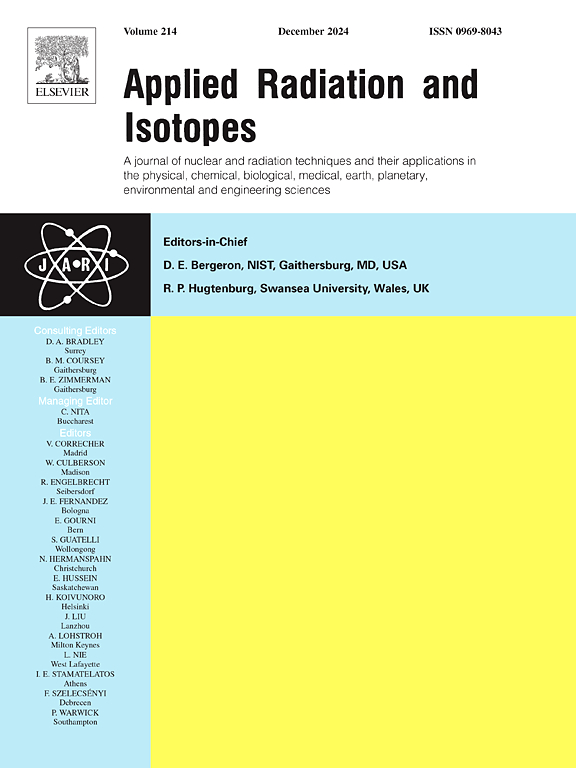Distribution and migration characteristics of 137Cs, 239+240Pu, and natural radioactive nuclides in the soil of Leye Tiankeng, China
IF 1.6
3区 工程技术
Q3 CHEMISTRY, INORGANIC & NUCLEAR
引用次数: 0
Abstract
To investigate the distribution characteristics of radioactive nuclides in the soil of typical karst Tiankeng areas, two soil core samples and thirty surface soil samples were collected from the Leye Tiankeng Group, northwest Guangxi province in China. The soil's vertical distribution of 238U, 232Th, 226Ra, and 40K is uniform. Furthermore, the distribution trends of 238U, 232Th, and 226Ra in the surface soil are similar. The activity range of 239+240Pu and 137Cs in surface samples was 0.037 ± 0.008 to 1.680 ± 0.037 Bq/kg and 0.86 ± 0.09 to 17.25 ± 0.38 Bq/kg, respectively. The specific activity ranges of 137Cs in two core samples were 0.12–4.36 Bq/kg and 0.29−4.76 Bq/kg, respectively, while those of 239+240Pu in core samples were 0.001–0.321 Bq/kg and 0.004−0.390 Bq/kg, respectively. The atomic ratios of 240Pu/239Pu and the activity ratios of 137Cs/239+240Pu both indicate that the artificial radioactive nuclides in this region originated from atmospheric fallout. The sedimentation rates derived from the distribution curve of 210Pbex and distribution of 137Cs and 239+240Pu in soil exhibit considerable parallel. The distribution of 239+240Pu and 137Cs in soil exhibits a high degree of similarity, and the deviations are mainly attributed to the influence of the physical and chemical properties of the soil. Finally, the distribution of two nuclides, 239+240Pu and 137Cs, in the research region after 100 years was predicted using the CDE model.

求助全文
约1分钟内获得全文
求助全文
来源期刊

Applied Radiation and Isotopes
工程技术-核科学技术
CiteScore
3.00
自引率
12.50%
发文量
406
审稿时长
13.5 months
期刊介绍:
Applied Radiation and Isotopes provides a high quality medium for the publication of substantial, original and scientific and technological papers on the development and peaceful application of nuclear, radiation and radionuclide techniques in chemistry, physics, biochemistry, biology, medicine, security, engineering and in the earth, planetary and environmental sciences, all including dosimetry. Nuclear techniques are defined in the broadest sense and both experimental and theoretical papers are welcome. They include the development and use of α- and β-particles, X-rays and γ-rays, neutrons and other nuclear particles and radiations from all sources, including radionuclides, synchrotron sources, cyclotrons and reactors and from the natural environment.
The journal aims to publish papers with significance to an international audience, containing substantial novelty and scientific impact. The Editors reserve the rights to reject, with or without external review, papers that do not meet these criteria.
Papers dealing with radiation processing, i.e., where radiation is used to bring about a biological, chemical or physical change in a material, should be directed to our sister journal Radiation Physics and Chemistry.
 求助内容:
求助内容: 应助结果提醒方式:
应助结果提醒方式:


